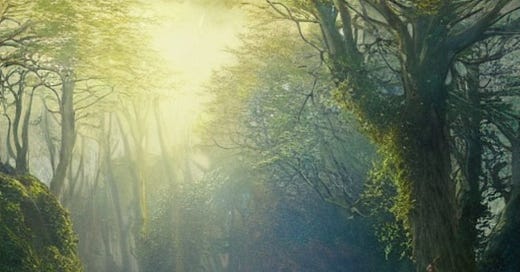The Bealtaine Festival, celebrated annually on May 1st, holds a special place in Irish culture, blending ancient Celtic mythology with contemporary Irish traditions. Rooted in the agricultural calendar and steeped in symbolism, Bealtaine marks the beginning of summer and serves as a time of renewal, fertility, and community gathering. From its mythical origins to its modern-day manifestations, Bealtaine remains a vibrant expression of Irish heritage and a testament to the enduring connection between past and present.
Origins and Mythological Significance: Bealtaine, also known as Beltane, derives its name from the ancient Celtic god Belenus, associated with the sun, healing, and fertility. In Irish mythology, Bealtaine marked the midway point between the spring equinox and the summer solstice, signifying the height of spring's power and the transition into the warmer months. It was a time of great significance, marked by rituals, bonfires, and ceremonies aimed at honoring the gods, protecting crops, and ensuring prosperity for the community.
One of the most enduring myths associated with Bealtaine is the tale of the May Queen and the Green Man. According to legend, on the eve of Bealtaine, the May Queen, representing the fertility of the land, would choose a consort, often depicted as the Green Man or the Horned God. This mythological pairing embodies the duality of nature—the feminine and masculine energies that drive growth and regeneration.
The May Queen, adorned in flowers and greenery, symbolizes the earth's fertility and abundance. She is revered as a goddess of the land, embodying the nurturing and life-giving qualities of nature. Her selection of the Green Man as her consort represents the union of opposites, the merging of the fertile earth with the wild, untamed forces of the natural world.
The Green Man, also known as the Horned God, is a symbol of vitality, wilderness, and the untamed spirit of nature. Often depicted with antlers or horns, he represents the primal energy of the forest, the power of growth, and the cycle of life and death. As the May Queen's consort, he embodies the masculine aspect of fertility, complementing her role as the embodiment of the earth's fecundity.
Rituals and Traditions: Throughout Ireland's history, Bealtaine has been celebrated with a variety of customs and traditions, many of which endure to this day. Bonfires, a central element of the festival, symbolize the sun's warmth and light, as well as the community's collective spirit. People would leap over the flames for good luck and protection, while livestock were driven between the fires to ward off disease and ensure fertility.
Maypoles, adorned with ribbons and flowers, are another iconic feature of Bealtaine festivities. Dancing around the maypole is believed to encourage fertility and prosperity, with each ribbon representing a different wish or intention for the coming year. In addition to bonfires and maypoles, traditional music, dance, and feasting play integral roles in Bealtaine celebrations, fostering a sense of unity and joy within communities across Ireland.
Another significant ritual associated with Bealtaine is the crowning of the May Queen. In ancient times, young women would compete for the honor of being crowned the May Queen, a symbol of beauty, fertility, and abundance. The chosen May Queen would lead processions, preside over ceremonies, and participate in rituals aimed at invoking blessings for the land and its people.
Bealtaine in Modern Ireland: While the rituals of Bealtaine have evolved over time, the spirit of the festival remains alive and well in modern Ireland. Today, Bealtaine is celebrated as a time of renewal, creativity, and connection, with events and activities organized throughout the country to honor its ancient roots.
Community gatherings, art exhibitions, workshops, and performances are just a few examples of how Bealtaine is commemorated in contemporary Ireland. These events offer opportunities for people of all ages to engage with their cultural heritage, express themselves creatively, and forge bonds with their neighbors. From traditional music sessions to storytelling circles, Bealtaine provides a platform for sharing stories, skills, and experiences that enrich Irish culture and strengthen community ties.
The Bealtaine Festival stands as a testament to Ireland's rich cultural heritage and enduring connection to the natural world. From its ancient origins in Celtic mythology to its vibrant celebration in modern times, Bealtaine serves as a reminder of the cyclical nature of life, the importance of community, and the power of tradition to unite generations past, present, and future. As Ireland continues to evolve, the spirit of Bealtaine remains a source of inspiration, creativity, and resilience for all who cherish its traditions and values.




